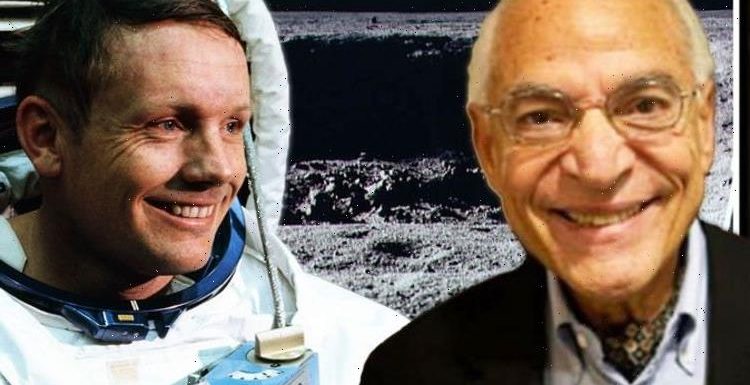
Apollo 11: Landing site 'didn't match the pictures' reveals expert
We use your sign-up to provide content in ways you’ve consented to and to improve our understanding of you. This may include adverts from us and 3rd parties based on our understanding. You can unsubscribe at any time. More info
Today would have marked Armstrong’s 90th birthday, had he not sadly passed away in 2012. The legendary astronaut became the first man to walk on the Moon during NASA’s Apollo 11 mission more than 50 years ago. Joined by his colleague Buzz Aldrin on the lunar surface, Armstrong would deliver his famous “one small step” speech before the pair spent two-and-a-quarter hours exploring what would become Tranquility Base.
They collected more than 20kg of rock samples before they buried the US flag into the surface to signify the end of the Space Race.
Live video footage would beam back to the millions watching on Earth and NASA would later release troves of images.
But one of the scientists who was in Mission Control that day – Prof El-Baz – has shared an incredible image that Armstrong took for him.
Prof El-Baz spent more than a year working with the Apollo 11 astronauts on another very important task they had to complete, which would be crucial for the success of future space missions.


Speaking to Express.co.uk exclusively, the 83-year-old – who was the leading geologist on the Apollo programme revealed how he trained Armstrong to take photos of “targets of opportunities”.
He said: “Neil was a very pleasant man with a studios attitude – as if he always wished to learn. As he was always eager to know, he remained quiet and deeply thoughtful.
“My briefings were usually for the whole crew, and with other individuals from the Manned Spacecraft Center.
“As I described the dark grey plain that his crew intends to land upon, he very thoughtfully asked: ‘What don’t you geologists know about that plain?’
“I immediately said, the thickness of the lunar soil – that is the layer that was broken to bits and pieces by impacts.

“I added that this might show up only in craters that penetrate that layer and hit solid rock and told himthat there probably would be no such craters in the landing site.”
Prof El-Baz was in charge of the selection of the landing site and had “certified that no such craters exist in the selected spot”.
But he explained how a mishap in the mission provided the astronauts with a unique opportunity.
He added: “It turned out that Apollo 11 landed farther west than planned because of an unintended increase in the lander’s velocity at the instant of separation from the orbiting mother ship.
“Neil has done all what he and Buzz were supposed to do.
DON’T MISS
Black hole shock: Scientist’s dire warning to humans [VIDEO]
Asteroid apocalypse: Scientist warns of ‘city-destroying’ space rock [OPINION]
Why ‘Trillion tonne rock hurtling towards Earth’ was ‘bad news’ [EXPLAINED]

“But, just before climbing back for the trip to the mothership, he sped, jumping toward a crater that sat to the east of their landing site, reached its brim, and intentionally took a picture of its wall.
“That one shot told us that the lunar soil at that location was least three meters thick. That knowledge helped us greatly in the site selection process for all later Apollo landing sites.
“One of our important objectives was to concentrate on acquiring samples from various levels of lunar surface materials.”
At just 31 years old, Professor El-Baz became the secretary of the Lunar Landing Site Selection Committee for the Apollo programme.
Born in January 1938 in the Nile Delta town of Zagazig, he spent his early years in Damietta, an Egyptian port city north of the nation’s capital, Cairo.

It was here that his love of science and the natural world was born from the colourful rocks of Mokattam Mountain.
He later moved to Cairo with his family to study geology, chemistry, biology and mathematics, graduating with a bachelor of science in 1958.
Moving to the US, he gained a Masters degree followed by a PhD in geology, but a return to Egypt would see him try and fail to secure a position there.
He returned to the US in 1967 and interviewed successfully for Bellcomm, which provided scientific support to NASA’s headquarters, soon working his way into the Apollo programme.
During his interview with Express.co.uk, he recalled the unique position he held in the early days as a non-US scientist and particularly an Egyptian – whose President at the time, Gamal Abdel Nasser – had forged ties with the Soviet Union.
He also remembered a fascinating, yet terrifying story from the mission that would inevitably lead to the astronauts landing at the wrong zone.
Source: Read Full Article